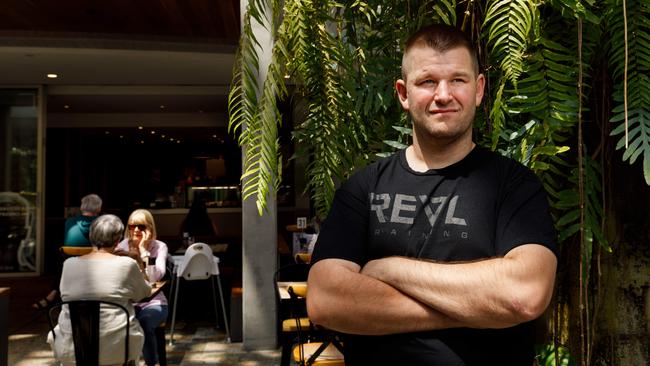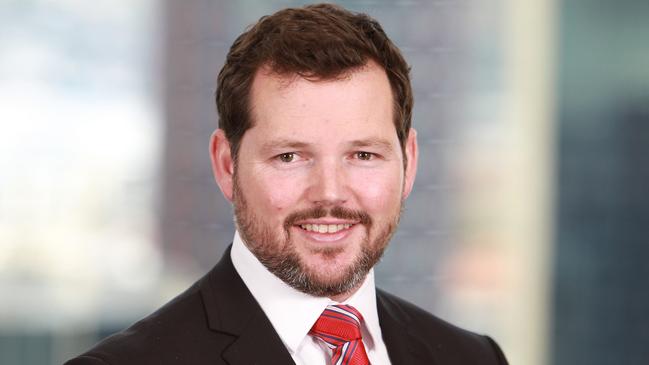More small businesses at risk of collapse call in liquidators to prepare restructuring plans
As the ATO chases down $35bn in debts, an increasing number of small businesses at risk of collapse are calling in liquidators to prepare restructuring plans.

QLD News
Don't miss out on the headlines from QLD News. Followed categories will be added to My News.
The number of company directors appointing liquidators to restructure their failing small businesses will balloon this year as the Australian Taxation Office ramps up its aggressive push to claw back more than $35bn in debt, according to insolvency experts.
Since it came into effect in early 2021, the federal government’s Small Business Restructuring (SBR) legislation has rapidly gained traction, capturing almost 20 per cent of all insolvency appointments, with the owners of more than 2430 companies taking the official restructuring path in 2024 in a last-ditch effort to stay afloat.
That represents an almost-210 per cent increase on the 779 SBR appointments in the previous calendar year, according to the latest Australian Securities & Investments Commission data.
The numbers continue to grow, with insolvency experts predicting SBRs will hit 3000 in the financial year to June 30. From the end of June to December 22 this year there have been 1500 SBR appointments, up almost 207 per cent from the same time period in 2023 and up 838 per cent on 2022 figures.
Jirsch Sutherland partner Andrew Spring said the ATO, usually the biggest creditor, supported the SBR process when the restructuring plan was well considered and in the interests of the tax office and broader community.
He said the directors of eligible companies usually opted for an SBR because they retained day-to-day control of the company, a moratorium on creditors’ claims provided breathing space and an expert helped prepare the restructuring plan.
“Average returns to creditors from the SBR process exceeds 20c in the dollar, whereas over 90 per cent of creditors’ voluntary liquidations result in no return to unsecured creditors,” he said.
Mitchell Leach said his decision in 2023 to take the SBR alternative rather than liquidation was based on the fact that he knew his two Four Brothers Espresso cafes on Sydney’s northern beaches could once again be successful.
“It’s been a balancing act but now we’re trading well and there is light at the end of the tunnel,” he said. “I think to get yourself out of the hole is far better than liquidation.”
His cafes struck difficulty in the aftermath of the Covid-19 lockdowns, and the ATO added to the pressure. “We were closed for six months and when we opened there was no foot traffic down here,” he said from his cafe in the Westfield Warringah Mall shopping centre, which he has run for six years.
“I was struggling financially at the time so I did a lot of research. I was looking at what options I had — liquidation or this Small Business Restructuring which seemed the better alternative. I had a successful business and it seemed better to try and dig yourself out of the hole you’re in.”
The SBR process has two phases — the appointment of a registered liquidator as the restructuring practitioner and if approved, a restructuring plan. The SBR plan leaves control of the company in the hands of the directors, not the liquidator.

Mr Leach said after getting approval he worked with an SBR practitioner and came up with a plan to pay back creditors and the ATO, which was owed about $120,000.
“Our debt built up when we were closed for six months. Even with the government grants and what not it was still a lot of rent we had to pay while we were closed and not trading. They helped with debt management and negotiated with creditors,” he said.
“We also managed to negotiate a bit of a lower lease term which would definitely help in the future. It’s a hard process and you work your way through. Not counting restructuring fees and initial payments we negotiated a payment of about 20c in the dollar. It went for one year and we paid back the debt we agreed on.”

The SBR legislation introduced a fixed fee requirement for the restructuring period, and then a percentage fee for the plan, if accepted. This avoids the substantial costs that can be associated with other types of insolvency appointments where fees are based on hourly rates.
There is also less publicity than going through an administration.
However, the ATO does reject SBR proposals for a variety of reasons, including director loan accounts (owed to the company), poor tax compliance, and if it doubts the business is strong enough to continue.
Importantly, to have an SBR plan accepted, a business must confirm that superannuation can be paid for all staff, excluding directors, ATO lodgements are up to date and less than $1m is owed to unsecured creditors.
Jirsch Sutherland’s Mr Spring successfully helped Peter Rechniewski — owner of Sydney jazz club Foundry 616 — restructure his business in recent years.
Mr Rechniewski, who has been a major player in the Australian jazz scene for decades, said even at the best of times it was “notoriously” difficult for jazz clubs to make money.
“Covid was one of the problems and we were not making enough money to get rid of the debts to the ATO,” he said.
“We had government financial support but when revenue was 18 per cent down in one year that’s massive. There’s no recovery from that. You still have to pay wages, pay rent, pay suppliers and utilities and they don’t change.”

Mr Rechniewski said Foundry 616’s financial position improved after his accountant advised him to contact Jirsch Sutherland.
“I had to sign documents to say that I engaged them to do this. They did everything else and they took an inventory of everything that wasownedby the holding company that trades as Foundry 616,” he said. “They then make an assessment of the ATO debt and they write to them and say they’re restructuring the company in order for us to go forward and continue trading and make an offer to them of how much of the debt can be paid.”
Mr Rechniewski declined to state what the original ATO debt was, but said the process was straightforward and “a good outcome”.
“This a very good piece of legislation for small business. What the ATO and responsible politicians realise is that most small business debts were with the ATO and in the end they would never have got any money because these places would have gone bankrupt,” he said. “That would have been me and I would have had to close the club.”
It is no coincidence the acceleration of SBR appointments coincides with the ATO ramping up debt recovery efforts in a faltering economy.
However, despite the ATO’s efforts to recover debt, money owed to the tax office has continued to rise.
Small business debt was at $35.2bn at the end of the 2024 financial year, up from $33.4bn the previous year and $16.5bn before the pandemic.
More than 40 per cent of this debt was six to 24 months old, demonstrating the difficult conditions for small businesses.

NSW-based event organiser Totem Skateboarding, another restructuring success story, says the company’s cashflow issues were exposed when the Covid-19 pandemic hit.
“We were steered to getting some credit cards,” said director Nigel Cameron.
“That was a huge mistake and we got into debt running and trying to grow the business.
“It takes three months to organise a tour and it costs a lot, and then we would try to float the business off credit cards. Then Covid hit and you can’t make any money. We weren’t able to travel, we were not able to work with the community and we could not make money the way we did in the past so we got into a bit of strife.”
Mr Cameron said after months of negotiation with the ATO he agreed to a repayment plan. However, with interest piling up, he could not keep up with repayments and bankruptcy was looming.
He said his accountants then recommended an SBR practitioner who formed a plan he thought “too good to be true”.
“They did an assessment of my business and went to the ATO and recommended a payment plan that would be fair without wrecking the business,” he said.
“The ATO had a panel and judged my case and after 14 days it was successful. They agreed for me to pay 20c in the dollar from my debt over the next 18 months, interest-free.”

Mr Cameron said he can now look ahead with confidence.
“I felt like for four years the business was drowning in debt. I recognised it but I was not honest with myself. I was so busy trying to run it to try and get out of it but the debt was a hole I couldn’t dig myself out of,” he said. “The ATO saw something in my business which means a lot to me. I love what I do and it’s incredible that we can continue to be able to do it.”
More Coverage
Originally published as More small businesses at risk of collapse call in liquidators to prepare restructuring plans





